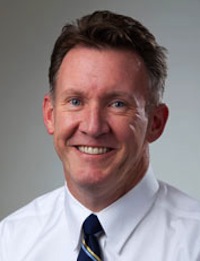The bad news: There aren’t enough people graduating with STEM degrees to fill them.
The nation’s workforce will face a shortfall of one million college STEM graduates over the coming decade, according to a recent report from the President’s Council of Advisors on Science and Technology.
Part of the problem is not enough students are studying math and science. And more than half who start their studies in physical or biological sciences or math end up switching majors before their senior year.
But why?
A new study being conducted by researchers from the Wisconsin Center for Education Research (WCER) and the University of Colorado Boulder will attempt to answer this question and look at what can be done to encourage more students to remain in those fields.
Co-funded by grants worth $4.3 million from the Alfred P. Sloan Foundation and the National Science Foundation, the five-year study’s research team is being led by principal investigators Mark Connolly of WCER and Anne-Barrie Hunter, co-director of Ethnography & Evaluation Research at CU-Boulder.
The new study, known as “Talking About Leaving Revisited,” will investigate why rates of switching from STEM majors are largely unchanged despite efforts since the late 1990s to improve college science teaching.
It follows the groundbreaking work done 15 years ago by Elaine Seymour and Nancy Hewitt, who wrote “Talking About Leaving: Why Undergraduates Leave the Sciences.”
The book has had a lasting impact and helped motivate national efforts to improve teaching in STEM courses and to retain more students in STEM fields, especially students of color and women.
“The book made quite a splash,” says Hunter, who worked on the original study. “It really reframed the whole discussion about why so many students don’t persist in math and science.”
The study found that poor teaching was the most significant factor in explaining why 40 to 60 percent of students nationwide switched from STEM majors.
As in the original study, the research team, which includes Seymour, will return to the seven original institutions and conduct more than 400 interviews with students who are “persisters” and “switchers.” It will also explore the learning experiences of students in foundational math and science courses, which are known to often discourage otherwise talented students.
“We’ll be looking at the connection between what happens in these gateway courses and which students switch majors,” Connolly says. “Using interviews with faculty, our own in-class observations and student surveys, we’ll get to compare what faculty say they’re teaching, what actually happens in the classroom and what students gain from the course.”
The new study will result in a book that reports the researchers’ findings and offers recommendations on what can be done to improve STEM education.
Reducing the percentage of students who leave STEM programs by just 10 points — down to 50 percent from the current rate of 60 percent — would by itself produce three-quarters of the million STEM graduates that will be needed, according to the White House report.
What’s at stake is a workforce needing jobs yet lacking the education to fill these highly skilled careers. Building off the work done by Seymour and Hewitt, this study aims to answer questions and find solutions that will help more students graduate with the STEM degrees needed for these in-demand jobs.
“It’s really unfortunate that so many talented students are still leaving STEM fields for reasons unrelated to their abilities,” Connolly says. “Clearly, it’s time to reexamine what it takes to help good students stay in science and math.”

